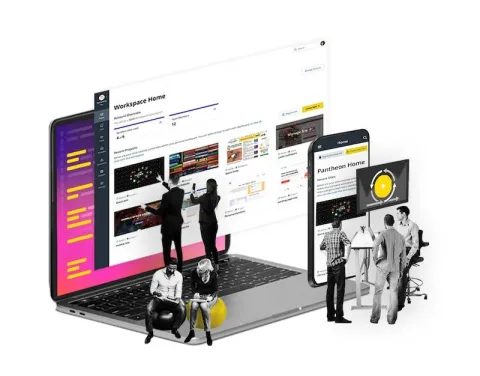5 Website-Building Woes and How to Overcome Them
Being an entrepreneur is often about accomplishing more with less. When it comes time to develop a website for your business, you can benefit from that same entrepreneurial approach. Instead of going straight for tools such as Optimizely or Crazy Egg, which require meaningful traffic to produce actionable results, start with user testing.
User testing begins with stakeholder interviews. Internal employees are one source of insight, but you should also find individuals who fit your key user personas. Identify the challenges they face, the information they seek, and their communication preferences.
With a fleshed-out communications and design strategy, take your user testing online with interactive wireframes. Wireframes are useful because they help you develop your information architecture, or how your messaging will be organized. Conduct these tests in iterative waves for the best results. Present the concept, refine with testing, produce a new concept, and repeat.
Testing your website is key because it will allow you to make decisions informed by data instead of instincts. With measures in place to track ROI, you can gauge the level of investment that makes sense for your business, and you can continually implement optimization strategies that improve outcomes over time. Throughout the process of building and testing your website, you’ll run into all sorts of challenges.
Read on for a preview of five website woes and how to overcome them to pull off the perfect launch.
1. Budget and timing:
Building a website is a really fun project. Lots of people are joining forces to share ideas, and together, you’re designing the face of your company. Still, it’s easy to get wrapped up in overly ambitious goals, and these distractions can quickly derail your project. Combat this issue with a clearly outlined minimum viable product (MVP) that will allow the project to actually make it to launch. Without a clear expectation of deliverables and a timeline to produce the site, you’ll inevitably end up over budget and late for go live. Produce an MVP, and you can iterate the details later.
2. Alignment on design:
Design is subjective, but it’s incredibly important; three-quarters of customers will judge your credibility based on your web design. To make things more complicated, stakeholders will have varying opinions about how your website should look, and the closer they are to the brand, the more invested they’ll be. Expect your well-developed wireframes to get torn to pieces by executives, but stand your ground on the big-picture ideas. Details can change, but making foundational alterations often means going back to square one.
3. Communication:
It happens to everyone. You spend the allotted time building a beautiful page, and with a deadline rapidly approaching, it gets filled with placeholder copy. Almost no one gets their communication strategy right the first time, but you can always make changes. Communicate with your audience, and listen to the feedback. Question your copy and iterate constantly to see what works.
4. Traffic generation:
Your website and "Field of Dreams" don’t have much in common. Building it does not necessarily mean they will come. Build elements into your launch plan that will help you amass an audience, such as social media, a pay-per-click campaign, and email marketing. In addition, optimize your landing pages for important keywords. Ranking for SEO takes time, but when it’s done right, it’s worth the investment. Leads gathered through search engines close at a 14.6% rate, while outbound leads produce a 1.7% closing rate. Not an SEO expert? There are plenty of firms out there that can help.
5. Driving business value:
This challenge is closely related to No. 4. Even with a fantastic new site, you need people to visit your landing pages in order to see an impact on your business. If you do have visitors, you’re a step ahead, but your work still isn’t done. Monitor conversion points closely, and test different CTAs and layouts. If phase one is about getting your site live, phase two is all about improvement and optimization.
Establishing a website testing environment isn’t always easy for a new business, so you’ll need to lean on loyal customers and leading stakeholders to get the feedback you’re looking for. At the same time, fight for the largest budget you can realistically get. Websites are expensive, but without the right resources at the start, you’ll make mistakes that end up costing even more in the long run. I’ve launched websites with high investment levels and others on a shoestring budget. When you test early, you’ll reap big benefits right off the bat, regardless of your resources.
If a website launch, or relaunch, is on the horizon for your company—let Pantheon know! We’ve developed the leading WebOps platform to drive success and online ROI for our customers.


